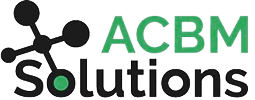Overview: How to Accomplish an Automated COA Conversion in 4 Steps
Redesigning and converting a Chart of Accounts (COA) is always a complicated process, but having a framework to work with can help make things simpler. Ironically, conversion is often significantly more costly and time-consuming than the design phase. However, with the right tools, it’s possible to cut the total cost by 50% or more. This quick overview covers how we typically guide clients through the steps involved in a software-driven COA conversion that standardizes, simplifies, and automates much of the process.
What Are the Advantages of a Software-Based Approach to COA Conversion?
- Automated Data Conversion (partial or entire data history)
- Flexible Cutover (choose your weekend)
- Fast Data Transfer and Project Runtime (limit downtime)
- Strong Security and Compliance (use a certified approach)
- Reusable Rules (perform multiple COA conversions)
The 4 Steps to an Automated, Software-Driven COA Conversion Process
Step 1: Structured Preparation
A systemized and efficient software-based approach ensures a compliant conversion. This starts with gathering all relevant information for the scope of change:
- Which charts of accounts fields are in scope (company, business unit, object, subsidiary, subledger, aid, ani)?
- Has a “target” Chart of Accounts already been designed? If not, what should it look like?
- Which tables are impacted by a COA change?
- How are reports and interfaces impacted by a COA change?
- Do any custom applications need to be updated?
With a standardized approach to gathering the RIGHT information, the project team (typically consisting of enterprise IT and operations department members) know exactly which tasks need to be completed. The right software platform also facilitates communication between IT, Accounting, and other business stakeholders facilitating agreement on the target concept in terms of content. Having a firm grasp on the definition of success is critical at this stage.
Step 2: New Chart of Accounts
Next, accounting will prepare the mapping documents between the existing COA and the new COA. A detailed mapping of each COA segment must be created. Scenarios for many-to-one and one-to-many should be considered when designing the structure of the mapping tables.
What about Historical Data?
Agreement must be reached on how much historical data should be converted. By converting historical data, users will be able to find all necessary data in the new system as if the new chart of accounts was always in place. This reduces IT costs and increases user acceptance.
Step 3: Configuration and Testing
IT’s role in this process is ensuring the COA solution is aligned with the specifics of the project. The conversion software itself helps drive the configuration process by:
- Analyzing and compiling all the impacted source data
- Uploading the account mapping
- Checking consistency of the configuration
- Managing unmapped data (kickouts)
A successful software solution will include functionality needed to manage, execute, monitor, and log the conversion progress. At this point in time, the software takes over and automatically executes all of the conversion work in a controlled and repeatable process by following business rules:
- Automatically identifying all the converted tables and fields affected
- Generating migration programs and executing them independently
What about Compliance?
The software logs all the important data, such as runtimes, record counts, mapped/unmapped data and error messages of previously completed jobs. The software then supports the planning, control, and documentation of testing and checks to see whether the technical transformation has been performed correctly. It analyzes all defined checklists and supports the company’s IT group in performing all necessary steps before and after each conversion.
The integration tests verify the validity of all the important process scenarios in the Chart of Accounts. The Go-Live only begins after all processes in the new Chart of Accounts are working as in the former one. This involves checking that balances and record counts are correctly designated in the new COA structure.
Step 4: Go-Live at High Speed
Automated software-driven conversion makes it possible to take the new COA live very rapidly. Usually, it’s possible to go live over a weekend, even for very large volumes of data. This applies to nearly all change scenarios, including the Chart of Accounts conversion within one cost center.
- Having a fast deployment provides leeway for companies to decide the dates for periodic COA conversions that meet their business requirements.
- IT benefits from being able to respond rapidly to the needs of business decision-makers without excessive strain on internal resources.
- Accounting leaders and teams experience substantial gains in their ability to pull financial data for evaluation to help drive faster and more accurate decisions without tedious manual reconciliation.
Software-Driven COA Conversion Is Repeatable: Transformation Memory Enables Reusability
A transparent software-based approach includes a comprehensive documentation of all steps, thus helping all project members to standardize the process of Chart of Accounts conversion within their organization. They can access existing business rules at any time and reuse them in other projects. In this way, a “transformation memory” is built up within the corporate IT with every single Chart of Accounts conversion project. This allows for a substantial and sustainable contribution to reducing time and costs of future projects.
Are You Migrating Data as Part of a JDE COA Project?
Data migration usually adds significant complexity to a COA conversion. However, our team at ACBM leverages proprietary conversion tools in JDE to reduce costs by 60-75% in some cases.
Whether you’re on JD Edwards or another ERP and Accounting system, we can help you with redesign and conversion. Talk to our team about your project today.

